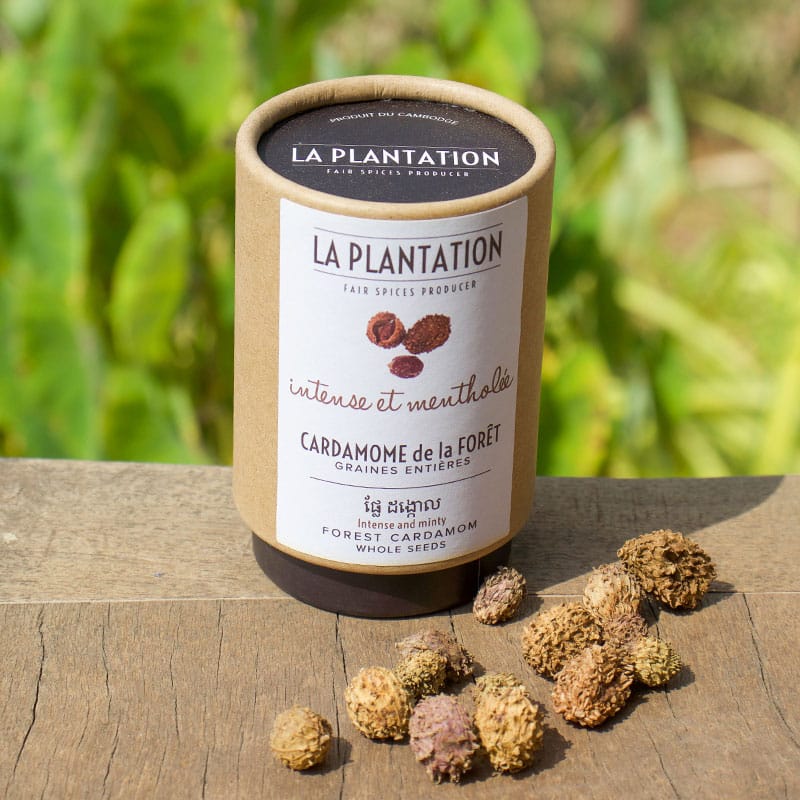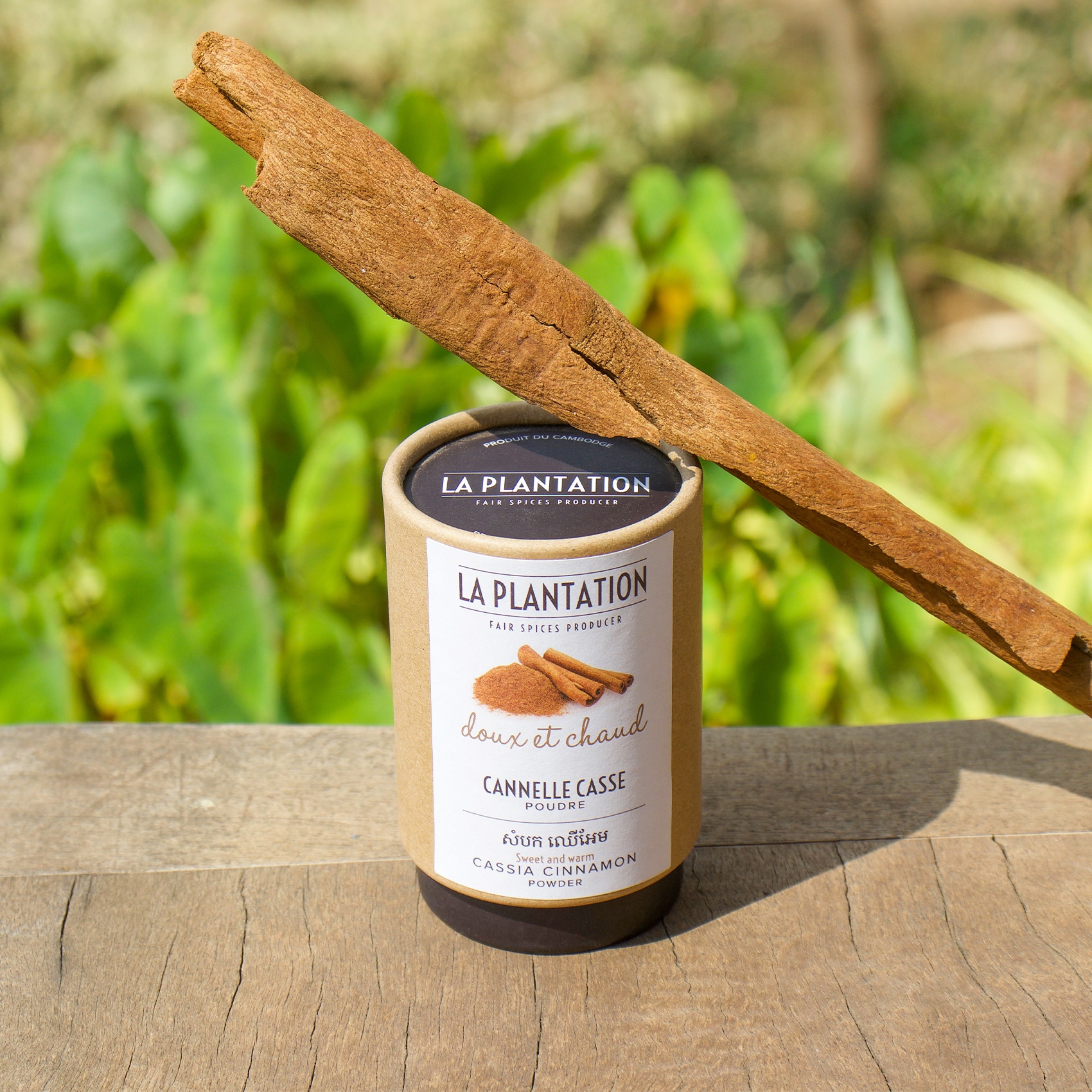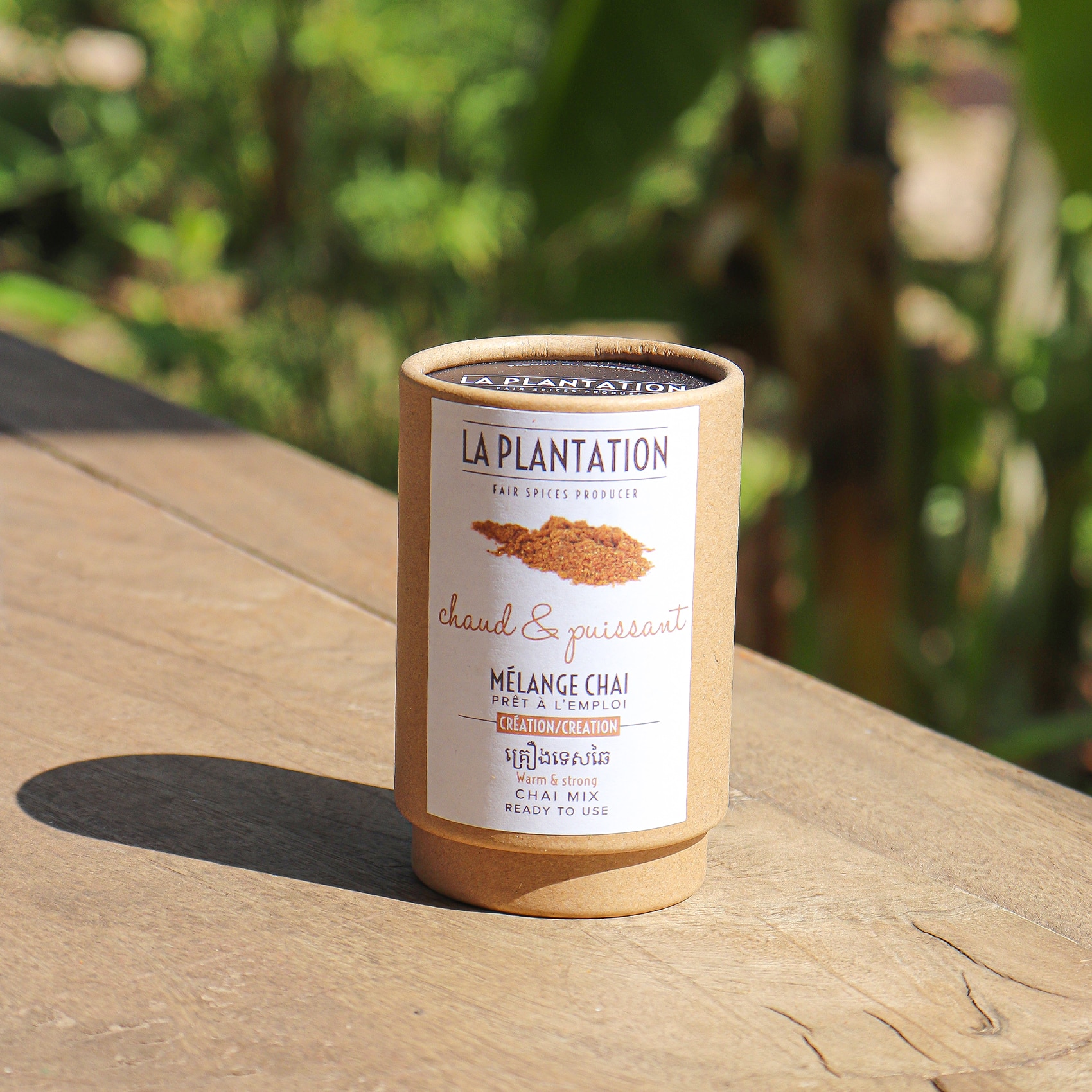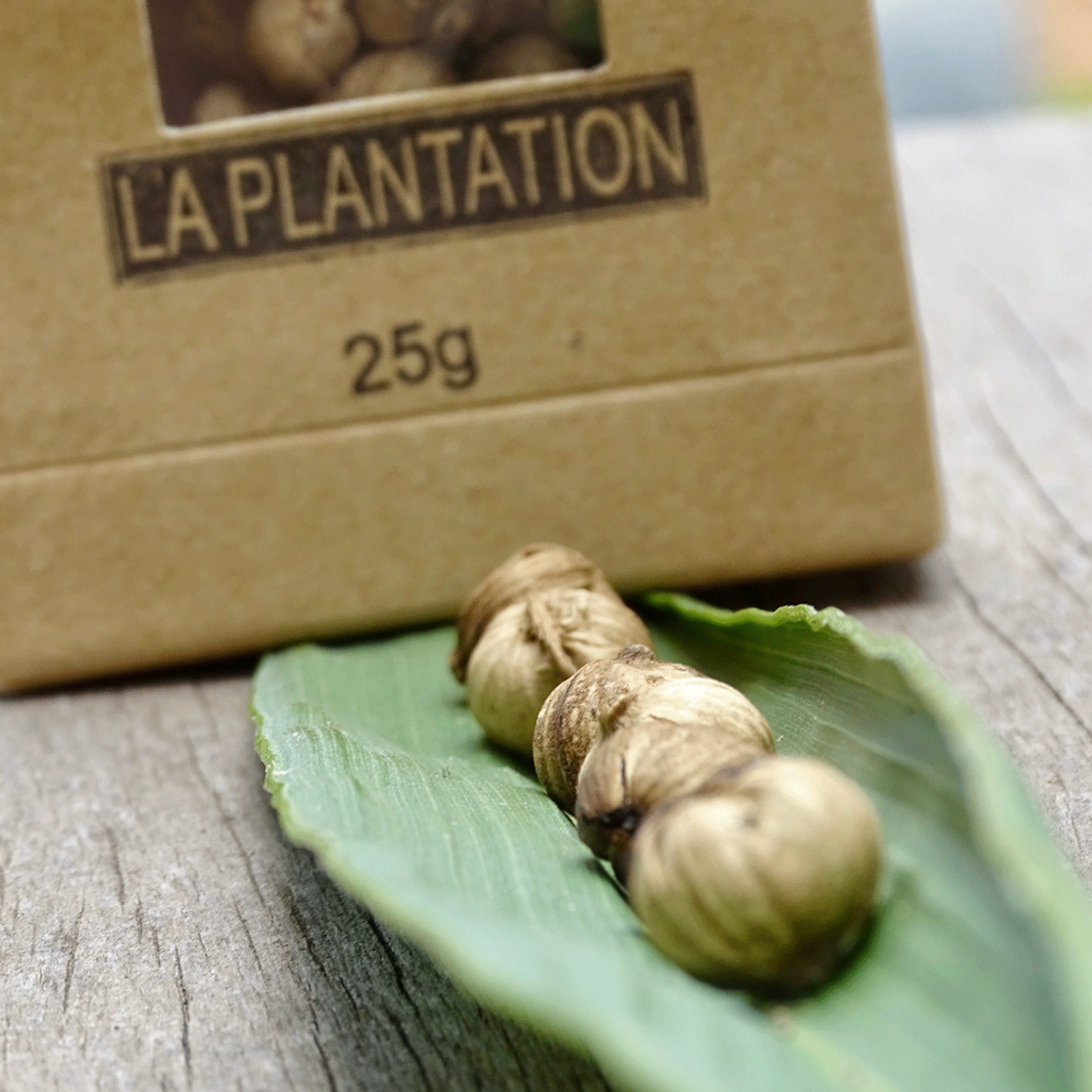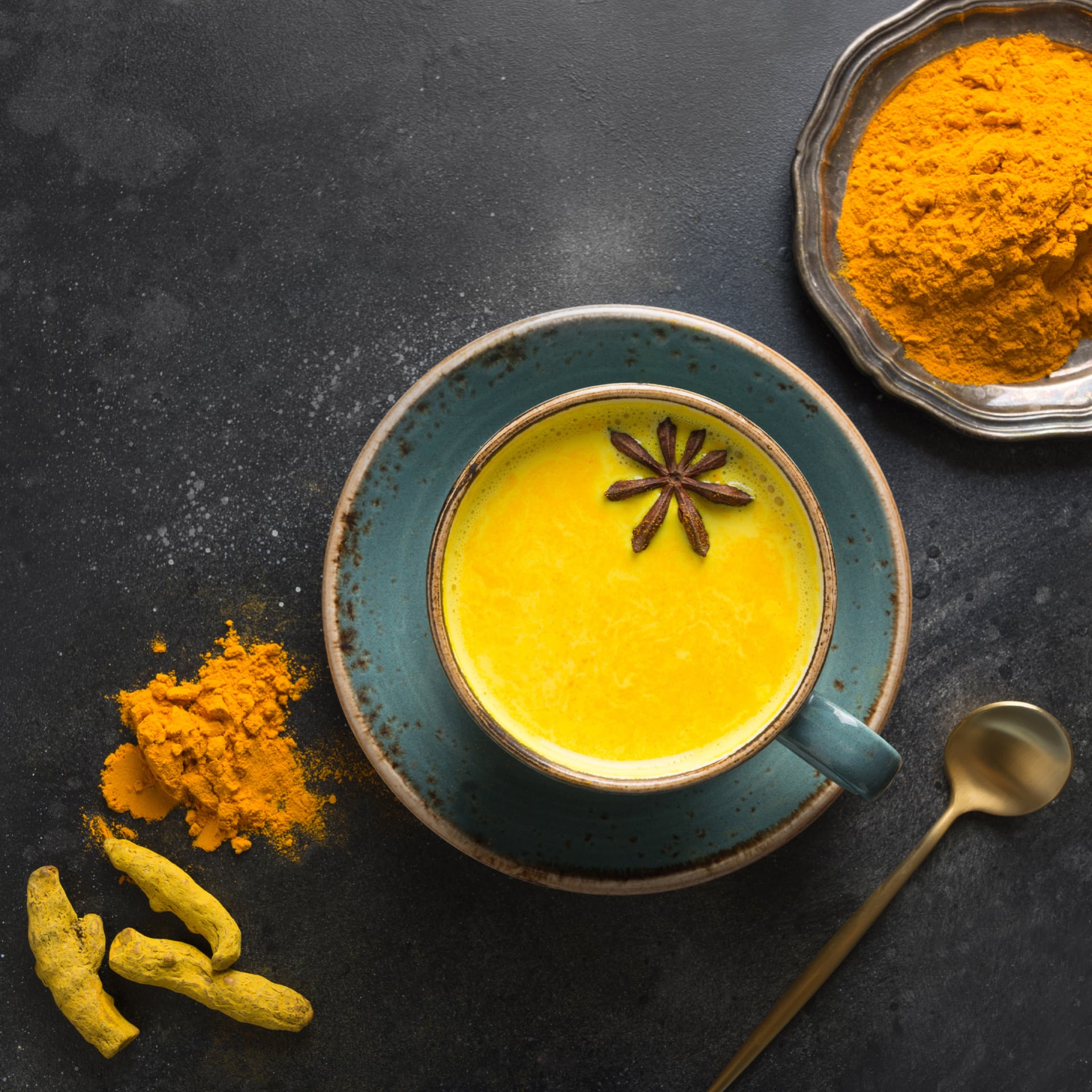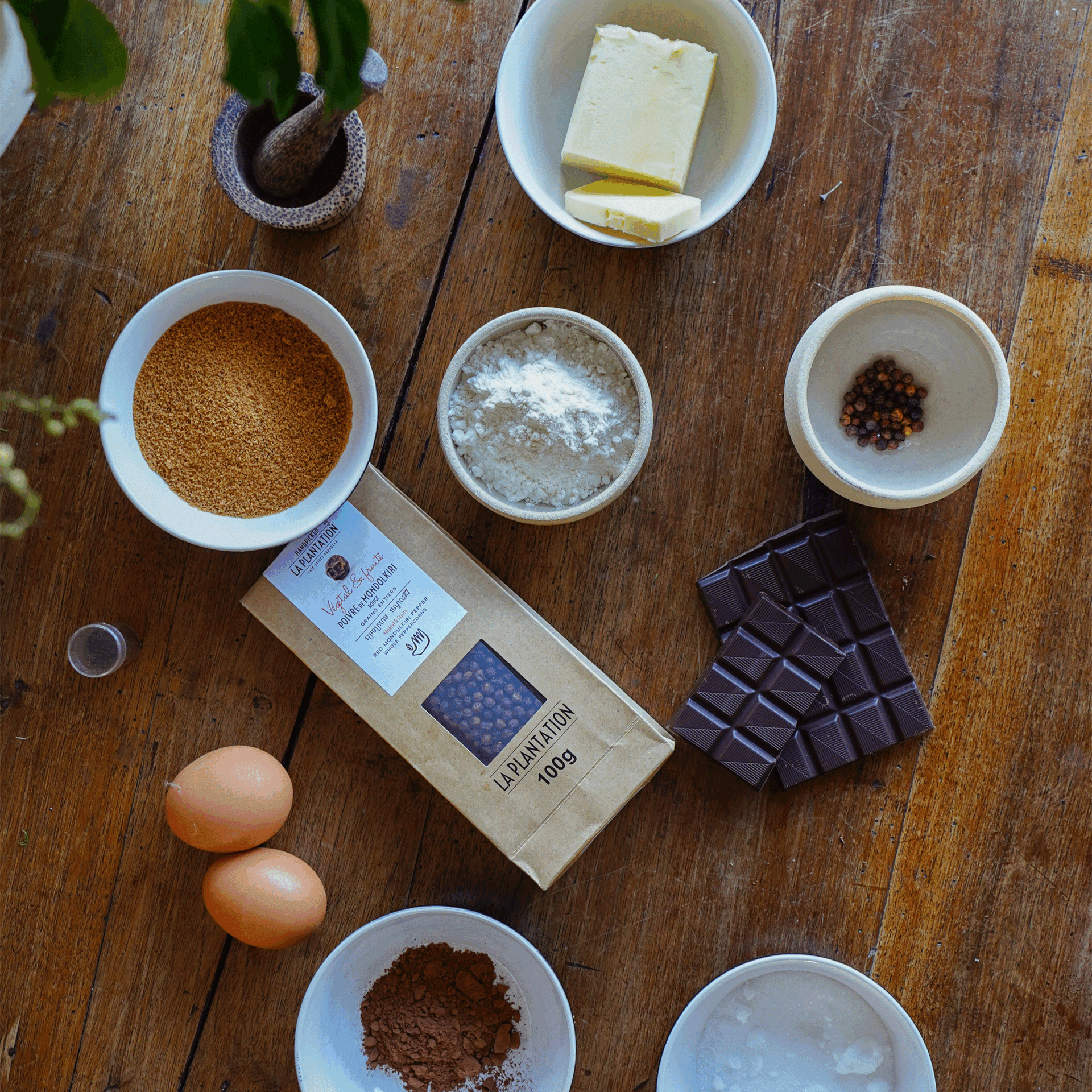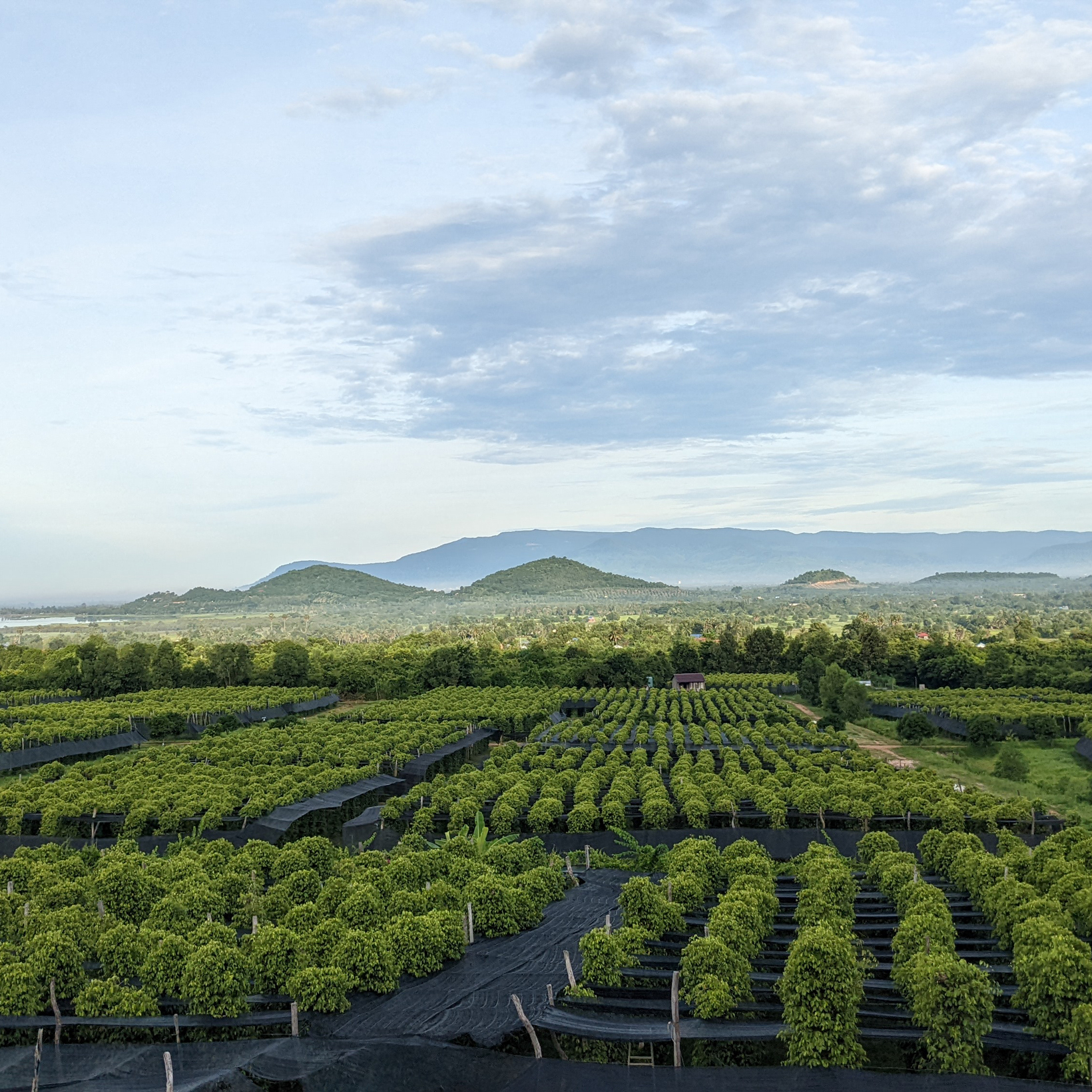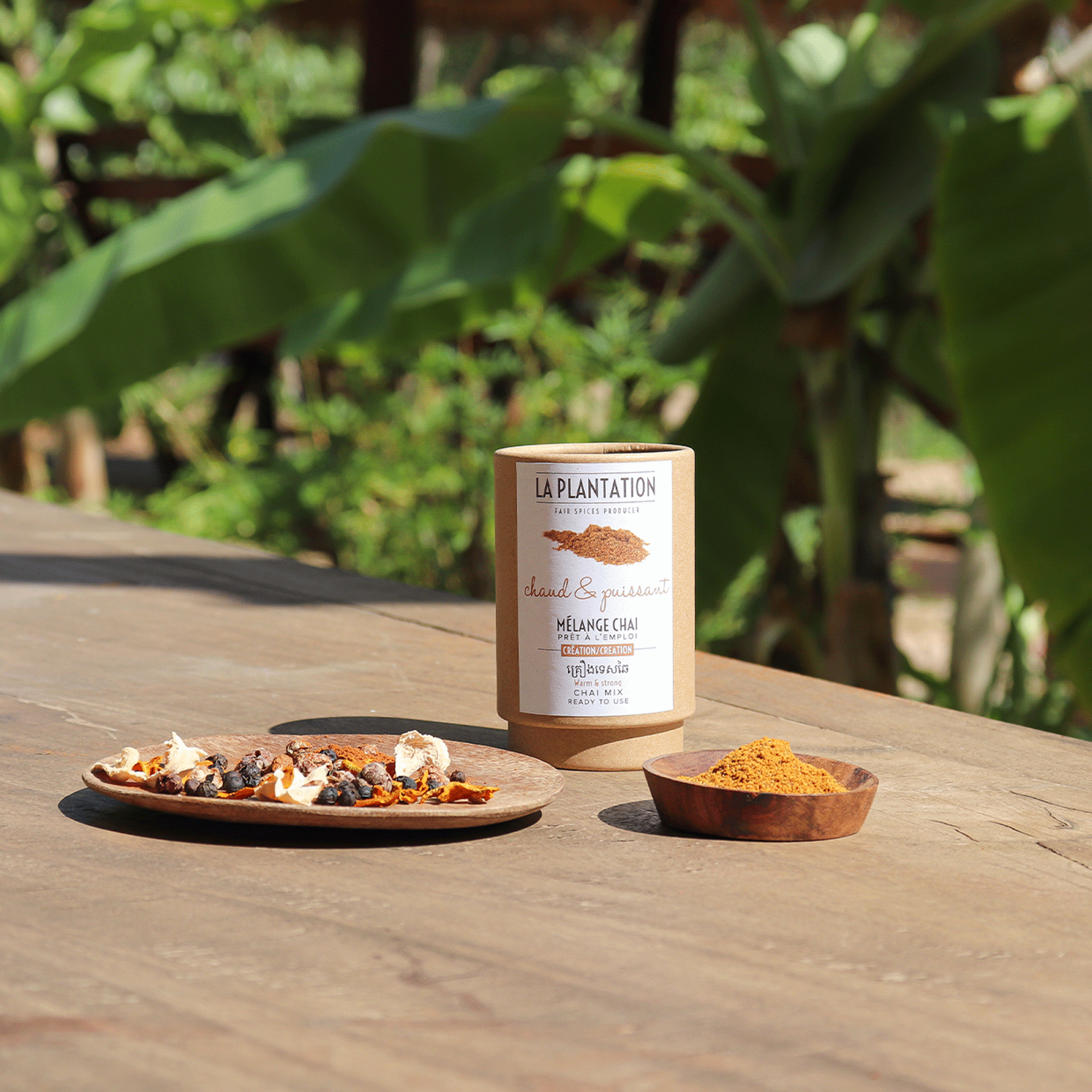
Spice of the Moment: Chai
More than a spiced tea, chai is a timeless symbol of comfort and connection. Born in India thousands of years ago, this drink carries a philosophy of wellness through plants and spices.
In this article, you’ll explore the origins of chai, its natural benefits, and simple ways to use it every day. You’ll also discover a Cambodian version — naturally caffeine-free — crafted from local spices such as cassia cinnamon, Kampot pepper, and turmeric. A blend that’s both sensory and cultural, deeply rooted in craftsmanship and flavour.
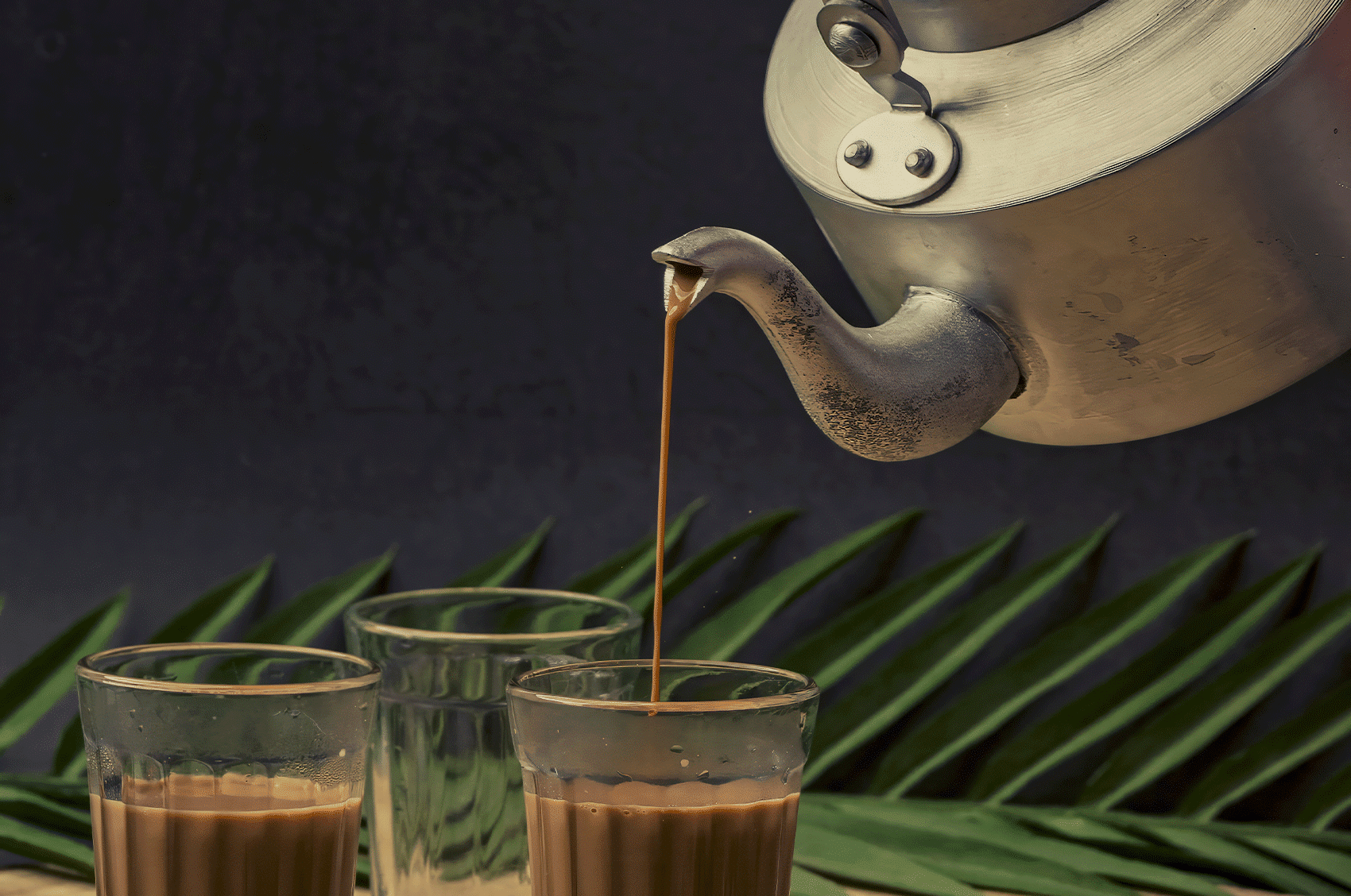
What is Chai?
Chai is a warm drink made from spices, often prepared with milk and sometimes black tea. The word “chai” simply means “tea” in Hindi, but today it represents much more — a blend of aroma, warmth, and conviviality.
Origins and spread of Chai
The story of chai begins in India, where it is known as masala chai — literally “spiced tea”. Its roots go back thousands of years to Ayurvedic medicine, where spices such as cinnamon, ginger, clove, and black pepper were infused in hot water for their therapeutic benefits: aiding digestion, boosting immunity, and restoring inner balance.
It was only in the 19th century, under British influence, that black tea was added to the recipe. From there, masala chaibecame a daily ritual, served in teashops across India — a drink to share, enjoy, and reconnect.
Chai in the Arab World
Through centuries of trade and cultural exchange, chai travelled far beyond India — finding new homes across the Middle East and the Arab world.
In these regions, chai evolved into karak chai or chai karak, particularly beloved in Qatar, Oman, and the United Arab Emirates. It remains a symbol of hospitality and social connection.
Here, the recipe changes slightly: cardamom takes the lead, bringing freshness and brightness to the blend, while milk and sugar create a smooth, rich texture.
This global journey shows chai’s greatest strength — its ability to adapt to cultures and tastes, while staying true to its heart: a harmonious fusion of spices.
The Cambodian Interpretation
In Cambodia, chai is not part of traditional cuisine — yet it has found a natural home here. Its comforting and balanced profile resonates perfectly with the Cambodian philosophy of wellbeing and harmony.
At La Plantation, we’ve reinterpreted chai through our local spices. Our Cambodian chai highlights cassia cinnamon, forest cardamom, young ginger, Kampot black pepper, and turmeric.
The result is a caffeine-free, balanced, and revitalising drink, both gentle and powerful.
Rather than copying the traditional Indian or Arabic chai, this blend celebrates the original spirit of chai — a drink that nourishes the body, soothes the mind, and brings people together through flavour.
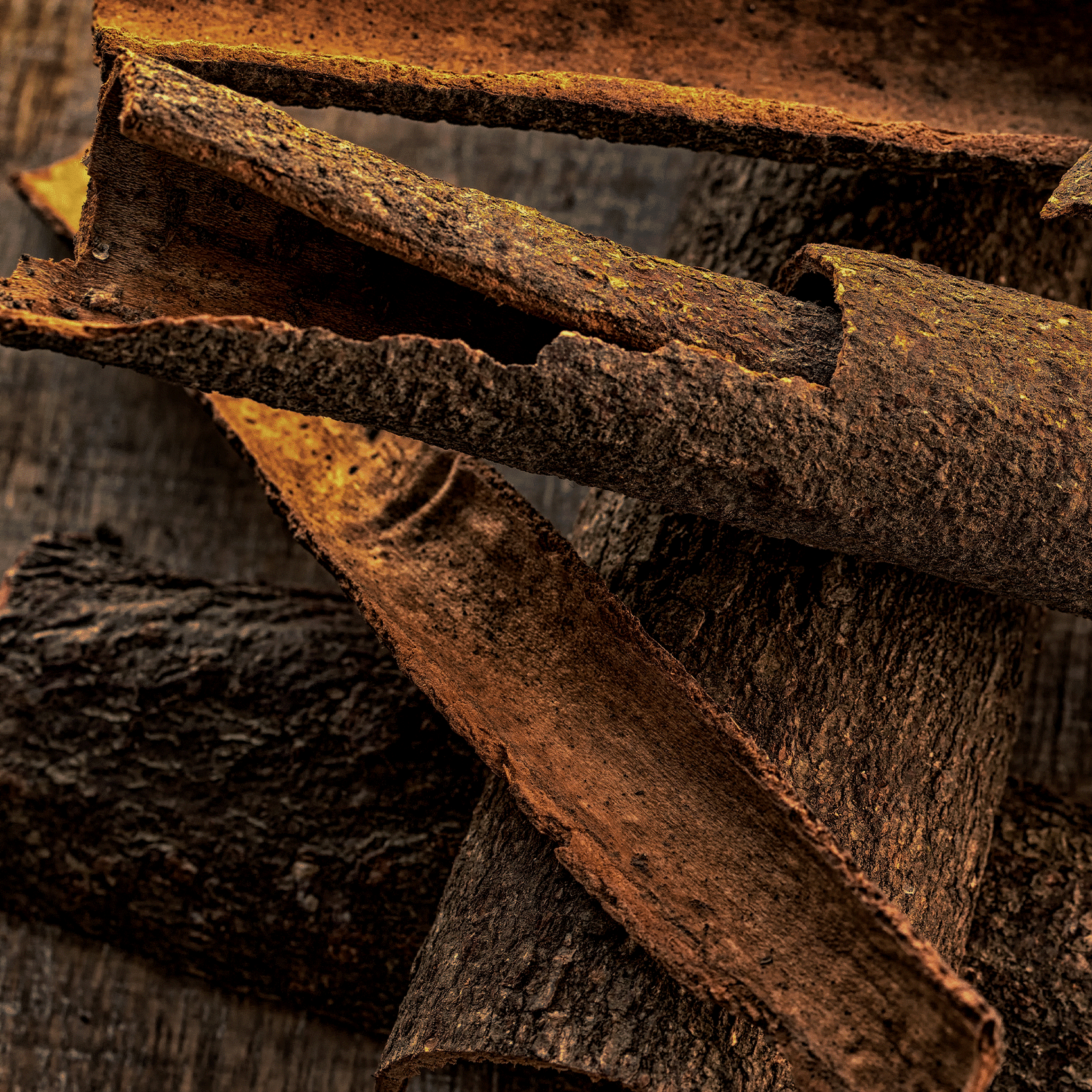
What are the spices in Chai?
The secret of a great chai lies in its balance of spices. Each spice plays a role — some bring sweetness, others heat or freshness. Together, they create the warm, layered profile that makes chai so unique.
The traditional Chai spices
In India, masala chai is a blend of whole or ground spices infused in hot milk.
The exact recipe varies from one region to another, but some ingredients are absolutely essential:
-
Cinnamon: Sweet and woody, it adds a comforting warmth and depth to every sip.
-
Ginger: Pungent and lively, it brings an energising touch and naturally supports digestion.
-
Cardamom: Often crushed or used whole, it adds a bright, citrusy freshness that balances the blend.
-
Cloves: Intense and aromatic, they add structure and character.
-
Black pepper: Spicy and invigorating, it enhances the flavours while gently stimulating the body.
Some regional variations also include nutmeg, star anise, or fennel, depending on taste and tradition.
Together, these spices form the heart of Indian chai, brewed with or without black tea, according to personal preference.
The cambodian Chai Blend by La Plantation
Our Cambodian Chai Blend reimagines this classic through a local lens — using only Cambodian-grown spices, cultivated ethically at La Plantation in Kampot.
-
Cassia cinnamon: With its sweet, woody aroma, it forms the foundation of the blend, bringing natural sweetness and balance.
-
Forest cardamom: Hand-harvested in southern Cambodia’s mountains, it adds cool, menthol notes and a refreshing citrus twist.
-
Fresh ginger: Harvested young, it delivers a lively, slightly spicy flavour that awakens the senses.
-
Kampot black pepper: World-renowned for its fruity complexity, it adds a soft heat and a lingering finish.
-
Turmeric: Its golden hue brightens the drink, while its natural antioxidants add depth and wellness.
This chai is 100% natural, caffeine-free, and sugar-free, offering a gentle and balanced alternative to traditional tea-based chai.
The combination of Kampot pepper and turmeric makes it as nourishing as it is delicious — a true sensory experience.
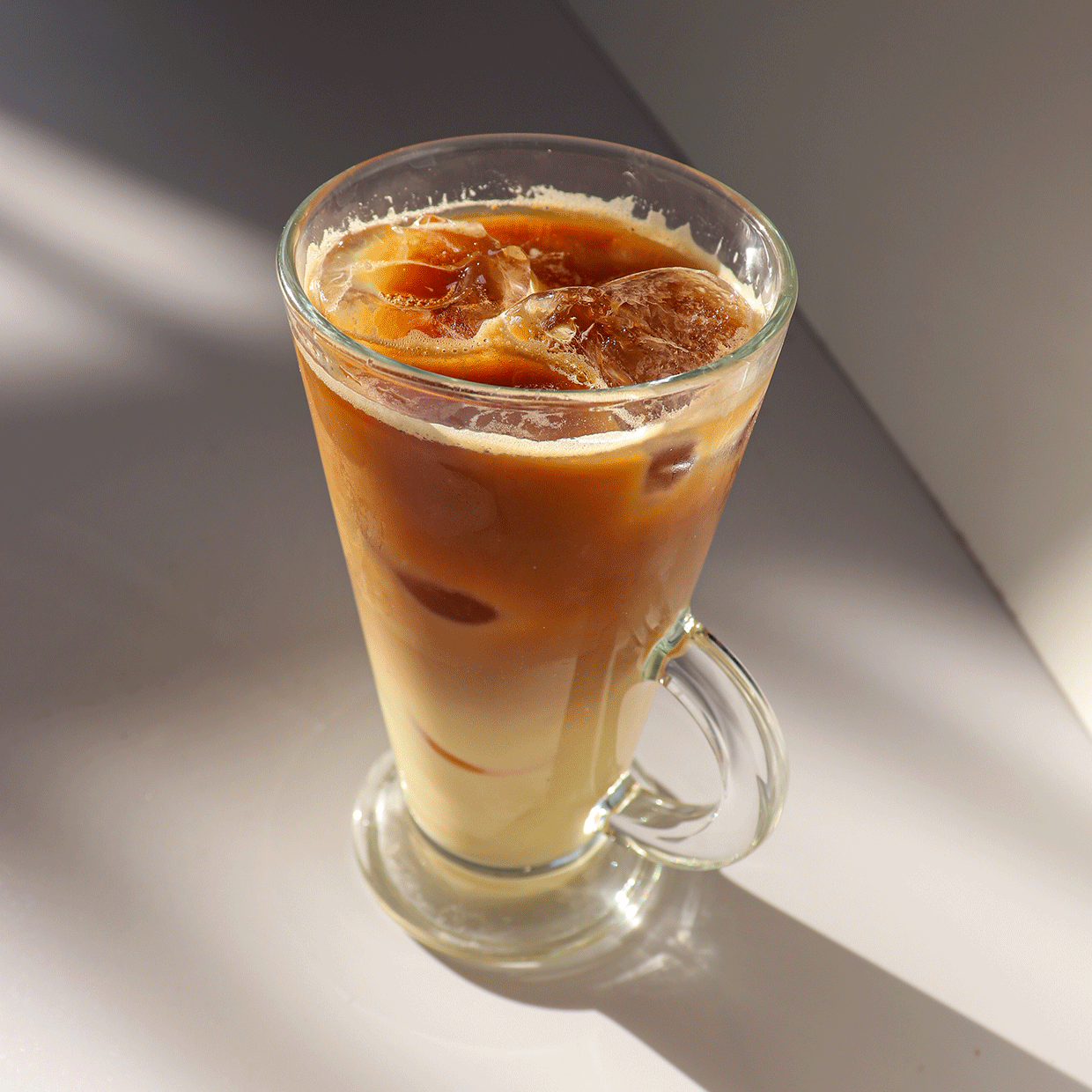
The natural benefits of Chai
Beyond its rich flavour, chai is appreciated for its natural benefits.
Each spice in the blend plays a specific role, known for centuries in traditional medicine.
In Ayurvedic practice, chai was created to strengthen the body and calm the mind.
The spices work together to support digestion, circulation, and relaxation — helping the body adapt to daily stress while bringing a sense of warmth and comfort.
Modern studies also suggest that many of these spices contain antioxidant and digestive compounds.
However, under current European health regulations (Regulation EC No. 1924/2006), no official health claims have been approved for chai spices.
They should therefore be enjoyed as part of a balanced and varied diet.
The Possible benefits of the main Chai spices
Ginger
Traditionally used to support digestion, ginger helps maintain healthy digestive function and is known to ease mild nausea.
Its natural compounds, such as gingerol, have antioxidant properties that may help protect cells from oxidative stress.
Cinnamon
Rich in polyphenols, cinnamon contributes to healthy blood sugar levels and digestive comfort.
Its naturally sweet aroma can reduce the need for added sugar while providing a warm, soothing taste.
Cardamom
Known as the “Queen of Spices”, cardamom supports digestive health and helps maintain gastric balance.
Its menthol-fresh aroma has a refreshing effect and adds lightness to the chai blend.
Kampot Black Pepper
This rare Cambodian pepper contains piperine, a compound that boosts the absorption of nutrients — particularly curcumin from turmeric.
It can also help stimulate metabolism and support healthy circulation.
Turmeric
Famous for its golden colour and earthy taste, turmeric contains antioxidants that help maintain joint flexibility and mobility.
When combined with Kampot black pepper, curcumin becomes more easily absorbed, enhancing its potential benefits.
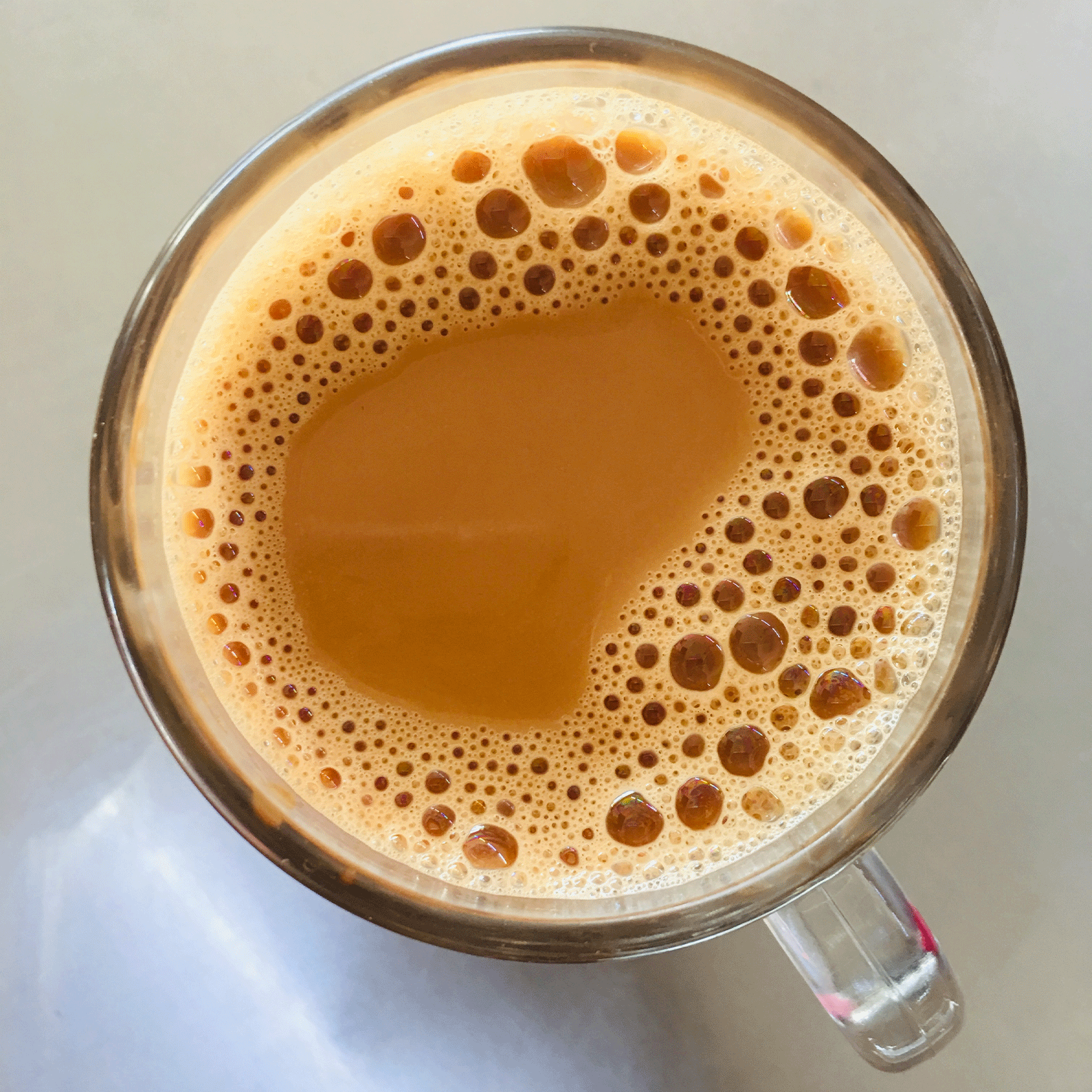
How to use the Chai Spice blend
How to make a Chai Latte?
Loved all over the world, the Chai Latte is the ultimate comfort drink — smooth, spiced, and soothing. Here’s how to make it at home:
-
Pour 200 ml of milk (dairy or plant-based) into a small pan.
-
Add 1 to 2 teaspoons of our Chai Spice Blend per cup, depending on how strong you like it.
-
Heat gently for a few minutes, without boiling, to let the spices release their aroma.
-
Whisk or froth until the powder blends perfectly into the milk.
Enjoy it as is — or sweeten lightly with a natural option such as palm sugar, which has a lower glycaemic index than refined sugar.
| Tip for summer: let your chai cool, add ice cubes and a splash of cold milk for a refreshing iced chai latte. |
How to use the Chai blend in cooking?
The chai spice blend isn’t just for drinks.
Its balanced fragrance works beautifully in desserts and even in savoury recipes, adding a warm, spiced depth to your dishes.
In Desserts and Baking
Biscuits and cookies: Add a spoonful of chai blend to your dough for a natural 4-spice flavour — woody, sweet and lightly peppery.
Cakes and muffins: Try a chai and almond loaf, or a chai amaretto cake for a soft, comforting twist.
Hot drinks: The blend pairs perfectly with cocoa or coffee — this is what we call a “dirty chai latte”, a deliciously spiced version of a classic.
At La Plantation, we love to use our chai blend to revisit favourites:
chai cookies, homemade speculoos, or pear and ginger muffins — simple recipes that reveal the blend’s warm, aromatic character.
In Savoury Dishes
Though less common, chai also enhances savory recipes beautifully.
Try it in:
- Coconut milk soups, for a mild, exotic depth.
- Marinades for poultry or tofu, for subtle spiciness.
- Mashed sweet potatoes or carrots, for a naturally sweet, comforting side dish.
This versatility makes chai a truly universal spice mix — as delicious in the kitchen as it is in your cup.

FAQ: Your questions about Chai
What are the main spices in chai?
Traditional chai blends include cinnamon, cardamom, ginger, clove, and black pepper. Some variations add nutmeg or star anise for extra warmth.
Is chai good for health?
Chai is naturally rich in antioxidant and digestive spices. While not a medicine, it can gently support well-being, immunity, and relaxation.
Does chai contain caffeine?
Traditional chai made with black tea contains caffeine. However, La Plantation’s Cambodian chai is 100% caffeine-free, so you can enjoy it any time of day.
Can I drink chai every day?
Yes — especially caffeine-free versions. Enjoy 1–3 cups a day as part of a balanced diet to gently support digestion and relaxation.
What is the best way to prepare chai?
For a classic chai latte, simmer 1–2 teaspoons of chai spices in milk for a few minutes, then whisk. Sweeten with honey or palm sugar if desired.
